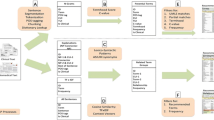Abstract
The automated capturing and summarization of medical consultations has the potential to reduce the administrative burden in healthcare. Consultations are structured conversations that broadly follow a guideline with a systematic examination of predefined observations and symptoms to diagnose and treat well-defined medical conditions. A key component in automated conversation summarization is the matching of the knowledge graph of the consultation transcript with a medical domain ontology for the interpretation of the consultation conversation. Existing general medical ontologies such as SNOMED CT provide a taxonomic view on the terminology, but they do not capture the essence of the guidelines that define consultations. As part of our research on medical conversation summarization, this paper puts forward a semi-automated method for generating an ontological representation of a medical guideline. The method, which takes as input the well-known SNOMED CT nomenclature and a medical guideline, maps the guidelines to a so-called Medical Guideline Ontology (MGO), a machine-processable version of the guideline that can be used for interpreting the conversation during a consultation. We illustrate our approach by discussing the creation of an MGO of the medical condition of ear canal inflammation (Otitis Externa) given the corresponding guideline from a Dutch medical authority.
Access this chapter
Tax calculation will be finalised at checkout
Purchases are for personal use only
Similar content being viewed by others
References
Federatie Medisch Specialisten FMS - Richtlijnen (Guidelines of The Dutch Federation of Medical Specialists). https://richtlijnendatabase.nl/. Accessed 11 Mar 2022
Introducing the knowledge graph: things, not strings. https://blog.google/products/search/introducing-knowledge-graph-things-not/. Accessed 11 Mar 2022
Nederlands Huisartsen Genootschap NHG - Richtlijnen (Guidelines of The Dutch College of General Practitioners). https://richtlijnen.nhg.org/. Accessed 11 Mar 2022
NHG Otitis Externa Guidelines. https://richtlijnen.nhg.org/standaarden/otitis-externa. Accessed 11 Mar 2022
SNOMED CT Basics. https://confluence.ihtsdotools.org/display/DOCSTART/4.+SNOMED+CT+Basics. Accessed 11 Mar 2022
Asim, M.N., Wasim, M., Khan, M.U.G., Mahmood, W., Abbasi, H.M.: A survey of ontology learning techniques and applications. Database 2018 (2018)
Bodenreider, O., Cornet, R., Vreeman, D.J.: Recent developments in clinical terminologies: SNOMED CT, LOINC, and RxNorm. Yearb. Med. Inform. 27(01), 129–139 (2018)
Cameron, S., Turtle-Song, I.: Learning to write case notes using the SOAP format. J. Couns. Dev. 80(3), 286–292 (2002)
Ehrlinger, L., Wöß, W.: Towards a definition of knowledge graphs. SEMANTiCS (Posters Demos SuCCESS) 48(1–4), 2 (2016)
ElAssy, O., Dalpiaz, F., Brinkkemper, S.: Developing Ontologies of Medical Guidelines for Automated Conversation Summarization, April 2022. https://doi.org/10.5281/zenodo.6469617
Latif, S., Qadir, J., Qayyum, A., Usama, M., Younis, S.: Speech technology for healthcare: opportunities, challenges, and state of the art. IEEE Rev. Biomed. Eng. 14, 342–356 (2020)
LeBlond, R.F., et al.: DeGowin’s Diagnostic Examination. McGraw-Hill Education, New York (2015)
Lehmann, J., et al.: Dbpedia-a large-scale, multilingual knowledge base extracted from Wikipedia. Semant. Web 6(2), 167–195 (2015)
Lohmann, S., Negru, S., Haag, F., Ertl, T.: Visualizing ontologies with VOWL. Semant. Web 7(4), 399–419 (2016)
Maas, L., et al.: The Care2Report system: automated medical reporting as an integrated solution to reduce administrative burden in healthcare. In: Proceedings of HICSS (2020)
Molenaar, S., Maas, L., Burriel, V., Dalpiaz, F., Brinkkemper, S.: Medical dialogue summarization for automated reporting in healthcare. In: Dupuy-Chessa, S., Proper, H.A. (eds.) CAiSE 2020. LNBIP, vol. 382, pp. 76–88. Springer, Cham (2020). https://doi.org/10.1007/978-3-030-49165-9_7
World Health Organization. WHO handbook for guideline development. World Health Organization (2014)
Peleg, M.: Computer-interpretable clinical guidelines: a methodological review. J. Biomed. Inform. 46(4), 744–763 (2013)
Rosse, C., Mejino, J.L., Modayur, B.R., Jakobovits, R., Hinshaw, K.P., Brinkley, J.F.: Motivation and organizational principles for the digital anatomist symbolic knowledge base: an approach toward standards in anatomical knowledge representation. J. Am. Med. Inform. Assoc. 5, 17–40 (1998)
Rosse, C., Mejino Jr., J.L.V.: A reference ontology for biomedical informatics: the foundational model of anatomy. J. Biomed. Inform. 36(6), 478–500 (2003)
van de Weerd, I., Brinkkemper, S.: Meta-modeling for situational analysis and design methods. In: Handbook of Research on Modern Systems Analysis and Design Technologies and Applications, pp. 35–54. IGI Global (2009)
Wang, M., Wang, M., Fei, Y., Yang, Y., Walker, J., Mostafa, J.: A systematic review of automatic text summarization for biomedical literature and EHRs. J. Am. Med. Inform. Assoc. 28(10), 2287–2297 (2021)
Wieringa, R.J.: Design Science Methodology for Information Systems and Software Engineering. Springer, Heidelberg (2014). https://doi.org/10.1007/978-3-662-43839-8
Zhou, L.: Ontology learning: state of the art and open issues. Inf. Technol. Manag. 8(3), 241–252 (2007)
Author information
Authors and Affiliations
Corresponding author
Editor information
Editors and Affiliations
Rights and permissions
Copyright information
© 2022 Springer Nature Switzerland AG
About this paper
Cite this paper
ElAssy, O., de Vendt, R., Dalpiaz, F., Brinkkemper, S. (2022). A Semi-automated Method for Domain-Specific Ontology Creation from Medical Guidelines. In: Augusto, A., Gill, A., Bork, D., Nurcan, S., Reinhartz-Berger, I., Schmidt, R. (eds) Enterprise, Business-Process and Information Systems Modeling. BPMDS EMMSAD 2022 2022. Lecture Notes in Business Information Processing, vol 450. Springer, Cham. https://doi.org/10.1007/978-3-031-07475-2_20
Download citation
DOI: https://doi.org/10.1007/978-3-031-07475-2_20
Published:
Publisher Name: Springer, Cham
Print ISBN: 978-3-031-07474-5
Online ISBN: 978-3-031-07475-2
eBook Packages: Computer ScienceComputer Science (R0)




